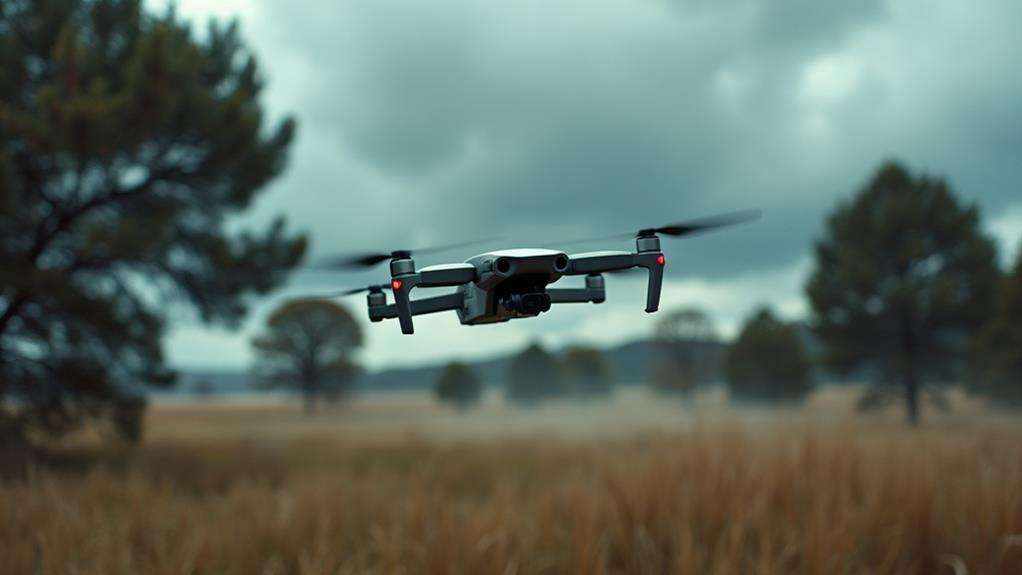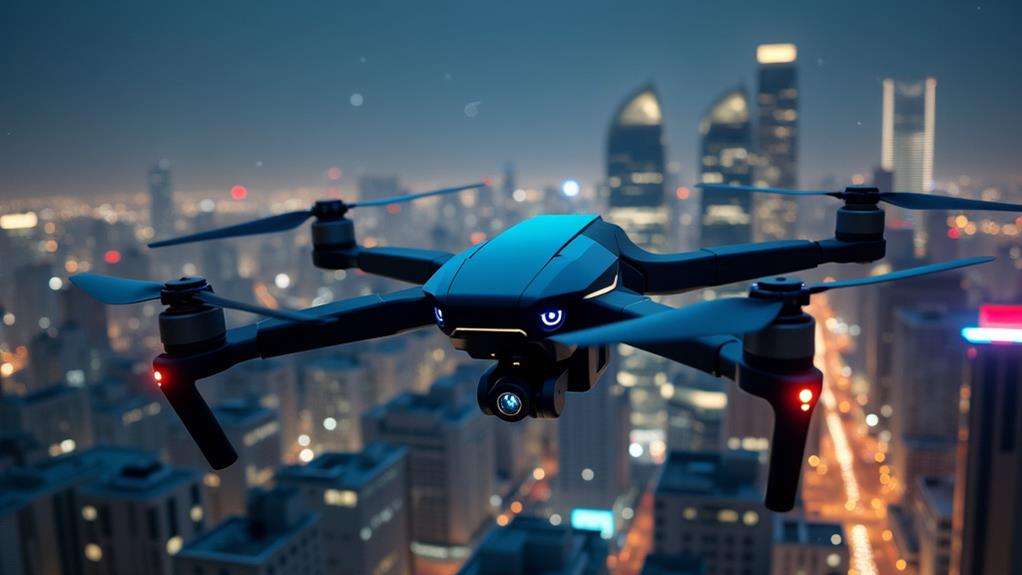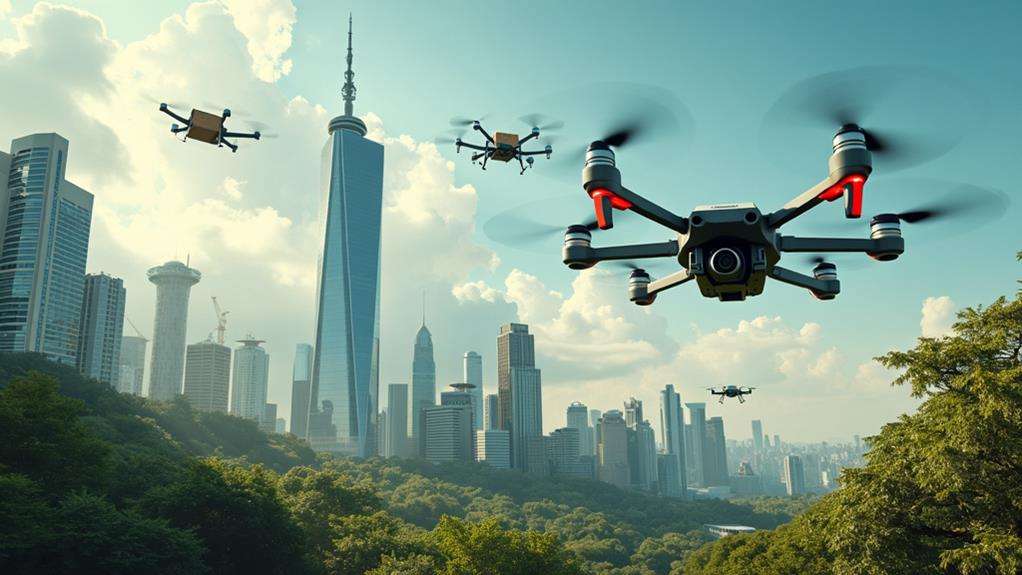What Is a Level 5 Drone?
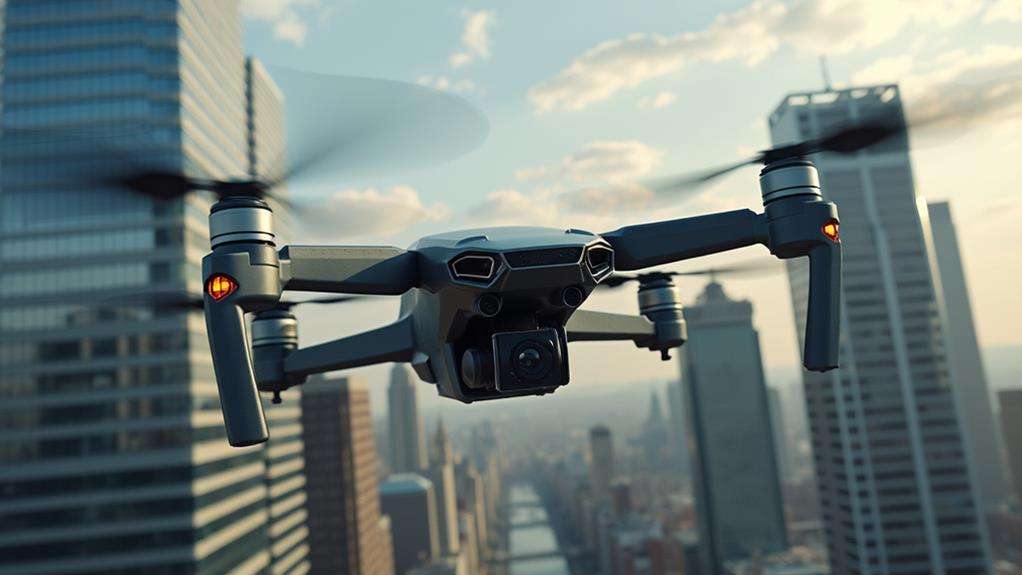
When you hear about a Level 5 drone, you might wonder what sets it apart from other drones. It's all about wind resistance, specifically the ability to operate stably in wind speeds of 19 to 24 mph. This feature is crucial for activities like agriculture, filmmaking, and delivery services, where maintaining stability is essential. These drones rely on advanced aerodynamic designs and cutting-edge stabilization technologies. But what exactly makes these drones so reliable in challenging conditions? Let's explore how Level 5 drones achieve their impressive performance.
Understanding Wind Resistance
Grasping wind resistance is crucial for the stable and safe operation of drones. Specifically, Level 5 wind resistance signifies the capability to handle wind speeds of 19-24 mph (30-38 km/h). This level is vital for maintaining stability and control in moderate wind conditions.
Drones with high wind resistance are optimal for a range of applications, including agriculture, filmmaking, and delivery services. These drones can operate effectively in windy environments, ensuring tasks are completed safely and efficiently.
Key factors that determine a drone's wind resistance include its aerodynamic design and thrust-to-weight ratio. Streamlined shapes and powerful motors enhance a drone's ability to withstand wind forces, allowing it to hover steadily and minimize the risk of crashes in adverse weather.
For safe drone operations, continuously monitor wind conditions. Flying in winds beyond your drone's rated resistance can lead to instability, increased battery consumption, and potential damage, jeopardizing the mission.
The Wind Resistance Scale
Selecting a drone with the appropriate wind resistance level is essential for safe and stable flight. A drone rated at Level 5, for instance, can withstand moderate winds of 19-24 mph, maintaining stability in various outdoor conditions. By choosing a drone with the right wind resistance, you can operate effectively without the risk of losing control.
Understanding Wind Resistance Levels
Ever wondered how drones stay stable in windy conditions? Understanding drone wind resistance is crucial for effective piloting. Level 5 wind resistance means a drone can handle wind speeds of 19 to 24 mph (30 to 38 km/h), which are considered moderate but impactful on flight stability. Knowing this helps you understand your drone's capabilities and ensures you maintain control during flight.
Here are four key points to better grasp wind resistance levels:
- Wind Resistance Scale: Drones are rated from 0 (calm) to 12 (destructive) based on their ability to handle wind. A higher level indicates better wind management.
- Level 5 Wind: Drones with Level 5 wind resistance are ideal for outdoor activities like agriculture, filmmaking, and search and rescue. These drones can withstand moderate winds without losing control.
- Pilot Awareness: Understanding your drone's wind resistance level is crucial. Operating beyond its capacity can lead to crashes and potential loss of the drone.
- Beaufort Scale: This scale categorizes wind strength and is the foundation for drone wind resistance ratings, helping you assess safe flying conditions.
Impact on Drone Stability
Understanding the impact of wind resistance on drone stability is crucial for ensuring safe and effective flights. A drone with a Level 5 wind resistance rating can handle wind speeds of 19-24 mph (30-38 km/h), which represent moderate wind conditions that can significantly affect stability and control. This rating is essential for maintaining hover capability and effective navigation in such conditions.
Increased wind resistance at this level allows the drone to better mitigate turbulence, reducing the likelihood of drift and enhancing overall flight stability. This enables confident outdoor operation without constant concern about the drone being swept away by gusts. However, it's important to note that higher wind resistance increases energy consumption, leading to faster battery depletion and potentially shorter flight times.
Understanding the Level 5 wind resistance rating is vital for flight planning and operational safety in windy conditions. Awareness of how these factors impact your drone's stability will help you make informed decisions and ensure successful missions.
Choosing the Right Drone
Selecting the right drone involves understanding the wind resistance scale, which ranges from Level 0 (calm) to Level 12 (destructive). This scale is crucial for ensuring your drone can handle the wind conditions you'll face. For instance, Level 5 drones are built to manage wind speeds between 19-24 mph (30-38 km/h), making them suitable for moderate wind conditions that could otherwise destabilize flight.
When choosing a drone, consider these factors:
- Drone Wind Resistance: Assess the wind resistance rating to ensure it matches the typical weather conditions in your area. Flying a drone in conditions where the wind exceeds its rating can lead to loss of control and crashes.
- High Wind Capability: Drones designed for higher wind resistance, like the DJI Mini 4 Pro with its 10.7 m/s (approx. 23.9 mph) capability, are more reliable in less-than-ideal weather.
- Beaufort Scale Reference: Use the Beaufort scale, which underpins drone wind resistance ratings, to gauge the wind strength and decide if it's safe to fly.
- Successful Drone Operation: Prioritize drones with proven wind resistance to ensure successful flights and avoid mishaps due to sudden gusts.
Level 5 Wind Resistance
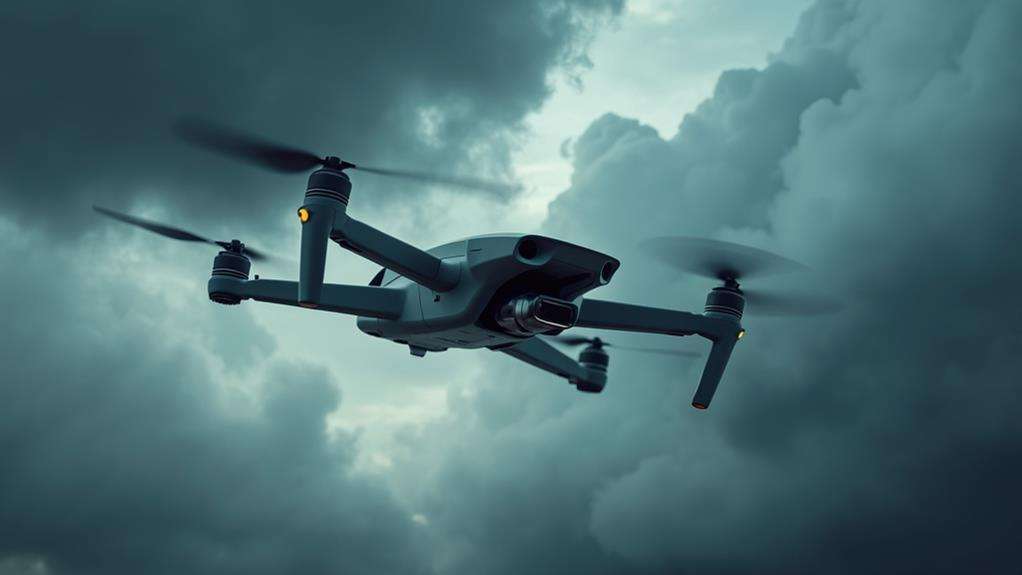
Level 5 wind resistance enables drones to handle wind speeds of 19-24 mph (30-38 km/h) while maintaining stability. This capability ensures smoother flights in moderate winds but may reduce battery life due to increased power consumption for stabilization. Whether you're involved in agriculture, filmmaking, or search and rescue, a drone with this rating, such as the DJI Mini 2, can significantly enhance your outdoor operations.
Wind Speed Tolerance
Understanding a drone's wind speed tolerance is crucial for ensuring safe and effective operation, especially in moderate wind conditions. For instance, the DJI Mini 4 Pro, with its Level 5 wind resistance, can handle wind speeds ranging from 19 to 24 mph (30 to 38 km/h). This capability allows the drone to maintain performance without compromising safety, even in relatively high wind conditions. However, it's important to note that such wind speeds can introduce turbulence, requiring more frequent adjustments to keep the drone stable.
Here are some key points to consider about Level 5 wind resistance:
- Drone Wind Resistance: Drones with Level 5 wind resistance can safely operate in wind speeds up to 24 mph.
- Maximum Wind Speed: The upper limit for these drones is approximately 24 mph. Exceeding this limit can lead to loss of control.
- High Wind Handling: Even Level 5 drones may require extra attention to maintain stability in high wind scenarios.
- Battery Efficiency: Operating within the recommended wind speed range helps maximize flight performance and battery life.
Understanding these factors will make your drone flights safer and more efficient.
Stability in Moderate Winds
Understanding how drones maintain stability in moderate winds is crucial for effective and safe operations. A drone with Level 5 wind resistance can handle wind speeds of 19-24 mph (30-38 km/h), ensuring stability and control in such conditions. This capability is essential for outdoor operations in variable weather.
Enhanced aerodynamic designs and advanced stabilization technologies are key to this performance. These features enable drones to counteract the effects of moderate winds, maintaining effective flight stability. Whether used for agricultural monitoring, filmmaking, or search and rescue missions, stable aerial performance is critical.
Operating in Level 5 wind conditions can reduce battery efficiency due to the increased power needed to counteract wind resistance. However, this trade-off is often worthwhile for the ability to conduct reliable operations even in less-than-ideal weather. Leveraging these capabilities can significantly enhance your drone's performance and mission success.
Impact on Battery Life
Operating a drone under Level 5 wind resistance conditions significantly impacts battery life. High wind speeds (19-24 mph) force your drone to use extra power to maintain stability and counteract wind drift, leading to increased battery consumption and notably shorter flight times. As your drone constantly adjusts its position to fight against the wind, the battery drains faster, which requires close monitoring.
Here are four key points to consider:
- Increased Power Usage: Your drone's motors must work harder to counteract wind forces, consuming more battery power.
- Shortened Flight Times: Increased battery consumption means your drone won't stay airborne as long as it would in calm conditions.
- Monitoring Battery Levels: Keeping an eye on your battery levels is crucial to avoid unexpected landings, especially risky in windy conditions.
- Managing Payloads: Heavy payloads combined with high wind can further strain the battery, so managing weight is essential for efficient drone flying.
Understanding how wind resistance affects your drone's battery life is vital for effective flight planning. By anticipating these challenges, you can optimize your operations for safer, more efficient flights.
Performance and Safety
Level 5 drones excel in handling moderate wind speeds of 19-24 mph (30-38 km/h), ensuring stable outdoor operations. This makes them ideal for various applications, as their wind resistance levels provide the reliability needed in challenging conditions. High wind resistance is crucial for maintaining consistent flight paths and avoiding sudden drops or deviations.
Enhanced wind resistance in these drones also leads to better battery efficiency. By effectively combating turbulence, they minimize rapid battery depletion, allowing for longer flight times and more reliable operations. The aerodynamic design and stabilization technologies incorporated in Level 5 drones ensure superior flight control and navigation capabilities even in challenging wind conditions.
| Aspect | Benefit | Note |
|---|---|---|
| Wind Resistance | Stable flight in 19-24 mph | Essential for consistent outdoor operations |
| Battery Efficiency | Reduced rapid depletion | Prolongs flight duration |
| Aerodynamic Design | Improved control | Enhances navigation in high wind |
| Operator Caution | Necessary in Level 5 conditions | Novice pilots must monitor and adjust often |
However, real-world performance often exceeds manufacturer ratings, so sustained wind conditions may challenge the drone's stability, especially at its wind resistance limits. Always exercise caution and constant monitoring to ensure safe operations.
Design and Technology
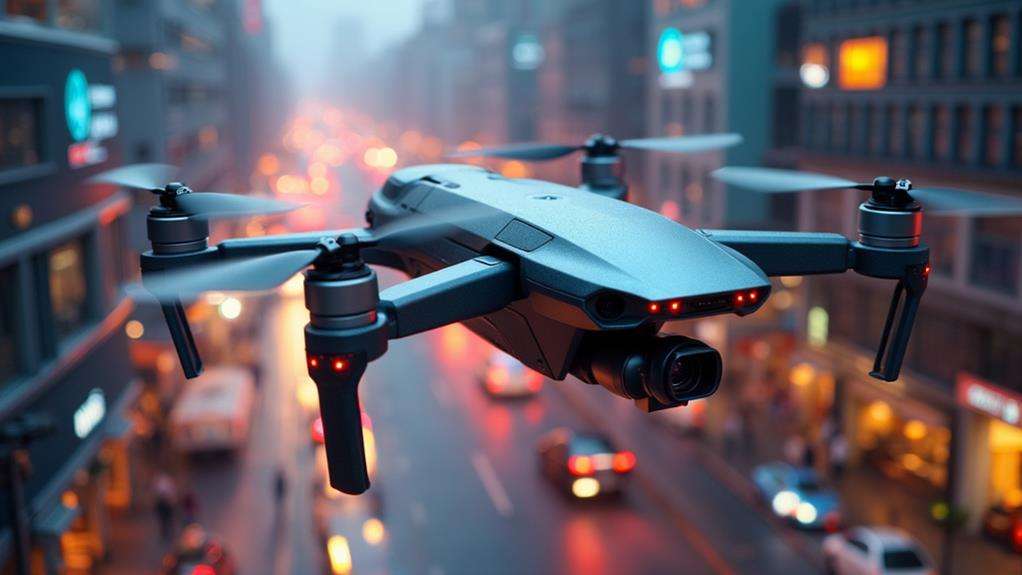
Design and Technology in Level 5 Drones
Design and technology in Level 5 drones focus on optimizing performance and reliability in moderate wind conditions, specifically wind speeds of 19-24 mph (30-38 km/h). Key factors ensure that drones like the DJI Mini can handle such conditions effectively:
- Aerodynamic Design: Streamlined shapes and lightweight materials reduce drag and enhance maneuverability, maintaining stability and wind resistance during flight.
- Advanced Stabilization Technologies: Integration of GPS and altitude hold systems significantly improves flight control, ensuring stability even in gusty conditions.
- Larger Propellers: Utilizing larger propellers generates more lift, counteracting wind forces and maintaining flight stability, reducing the likelihood of the drone being pushed off course.
- Rigorous Testing Protocols: Drones undergo stringent testing to evaluate performance and reliability in various wind conditions, ensuring compliance with industry standards for optimal handling in the air.
Industry Applications
Drones with Level 5 wind resistance have significantly impacted various industries by maintaining consistent performance in moderate wind conditions (19-24 mph or 30-38 km/h). In agriculture, these drones facilitate efficient crop monitoring and precise data collection, regardless of windy conditions.
In filmmaking, Level 5 drones capture stable aerial footage, allowing drone pilots to focus on creative angles and shots without being hindered by strong winds. For search and rescue operations, Level 5 wind resistance ensures effective performance, enabling timely responses in critical situations where every second counts.
Delivery services benefit from these drones' ability to transport packages reliably in urban environments, maintaining efficiency despite wind challenges. Surveying applications also gain from Level 5 wind resistance, as drones can collect accurate data in diverse conditions, providing reliable and precise information.

